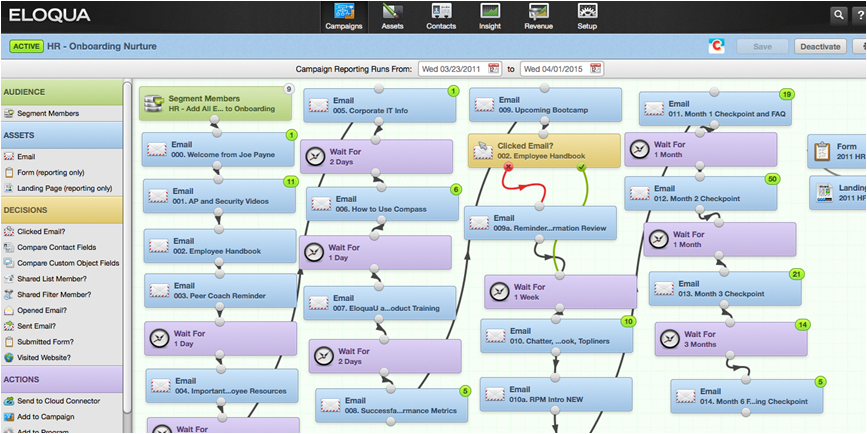I work in marketing and am generally of the strong belief that it needs to evolve as a field — there’s still way too many people in the industry and running departments who think in the old-school way (ad buys, “power branding,” all that) and not enough people yet who think in a newer-school way (better content, targeted e-mails, A/B testing, embracing social and analytics). Sometimes I think the old school’s trying to hang on ’till retirement, and the new school knows how to grab power — when you have analytics, you know what people are doing on a site, and when you know what people are doing, you can optimize for them — but they keep getting squashed because of the ol’ fear of incompetence at the top.
One of the scourges of this whole process is “marketing automation.” If you hear that term and you’re a busy (or thinks he’s/she’s busy) marketing middle manager, you might instantly embrace it. Automation. That’s good. That’s easier, right?!?! (Never mind that it may take your job outright in 20 years. That’s for another post.) People want it. Look at these stats on small businesses; basically 10 in 10 want to buy a program.
The basic deal with “automation” isn’t even that automated: you still do a lot of set-up work. You design, essentially, “paths.” If someone comes to your website and clicks here and here, or stays on X-page for a while, then they get a “targeted” e-mail 2 days later. It can seem a little creepy to the person receiving it, honestly. But most of “digital marketing,” for better or worse, is currently still about e-mail capture and message targeting.
That’s a dangerous world because most people in marketing love big numbers, and they confuse “targeted messaging” with “sending out the same mass of shit to everyone, just so they can tell their bosses how many e-mails are being opened.” None of it matters.
But the point is, “marketing automation” requires a bunch of work on the front end — set up some “personas,” understand your “lead generation funnel,” and know the parts of your website and what they correlate to — and then the system does everything on the back-end, give or take.
Core problem? Most automation suites aren’t actually adaptive. It’s hard to make changes, it’s confusing, and if you have turnover on your team — or if your DEV team (codes the website) doesn’t talk to marketing (manages the content on the website), then your paths get messed up.
Look at this screenshot from one suite:
It looks like something a six-year-old drew … or potentially a monkey on crack. Do you know how many ways something like this can go wrong? About 14,569. (That’s a scientific estimate at guessing, FYI.)
This is where it gets annoying: marketing is actually, at base, a pretty simple concept. Your organization has a story or a brand or a value it provides, right? (It’s probably a bit more than just the suite of products, as an aside.) You take that value/brand/story and, well, you tell it. It’s actually somewhat helpful to start with the outcomes — what will a person/buyer say? — and then work backwards, but that’s just my two cents.
It’s relatively simple then — understand the value and convey the value, and when the attention of other people is captured around the value, well, move those people over to sales — but rather than making it simply about conversations and value, we over-complicate it with these fat, not-sleek tools that promise they’ll “automate” everything for us. That’s dumb.
Don’t believe me? OK. Some companies have no CMO and still are worth about $2 billion, just by learning how to listen to consumers.


Reblogged this on Oleg Baskov.